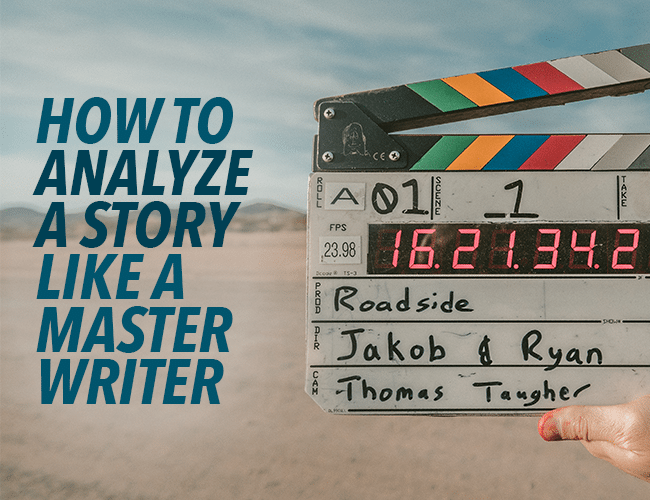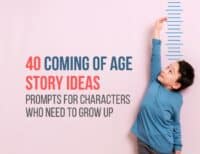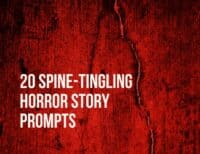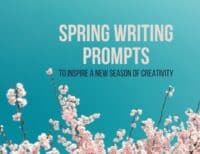As writers, there is no replacement for reading as a practice to become a better writer, but studying film or television can be just as instructive. The key is knowing how to analyze a story to understand what works in it and why.

My students are analyzing the film The Princess Bride this week. They’ll deconstruct the plot, the characterization, the dialogue techniques, and more.
Our goal isn’t to leave the film dissected like a frog pinned open, raw and disgusting. Our goal in analyzing the film (or any reading) is to deepen our understanding of the techniques the author, director, and actors use in telling an effective story. Seeing the craftsmanship deepens our appreciation for a story.
Ultimately we’re building models for our own work by asking one critical question. What if that one question could make you a stronger reader, viewer, and ultimately writer?
First, Recognize What You're Reading
We draw inspiration from everything we encounter, but when we get serious about strengthening our writing, we need to step up our reading and viewing habits.
Before we ask our critical question, we have to begin by being honest about what we consume. What are we reading? Watching? Experiencing? If we want to be better writers, we have to make specific choices.
Anything I put into my mind and body will come out in some form. I consistently ask myself what I’m allowing to influence my work and life. I make space for reading and viewing that is less instructive, but I know I want to be challenged too and make choices accordingly.
Then, Ask the One Question
Once we are aware of our input, we have to ask the right questions. Want to learn how to analyze a story? First, find the right questions to ask.
In my case, I ask one question over and over again. Whether it is a show that makes me cry or a book that keeps me up too late, I have one driving question:
How did they do that?
Of course, simply knowing the right question isn't enough. Here's the process I used with my students to learn from the master storytelling in The Princess Bride:
1. Find what works
Identify what worked well in the book or show. Whether it is characterization, tension or a structure, figure out what was compelling.
For example, in The Princess Bride, students noticed the repeating quest structure and how it proves the hero’s new worth.
How did Goldman elevate Westley’s status to make him heroic? He’s not a knight or noble, but his adventures and trials prove his worth.
2. Study the components
If a writer has created tension, what separate elements does she bring together to create tension? Is the protagonist working against a clock or is there dramatic irony and the audience knows he’s about to walk into a trap?
If a writer is building a hero, what elements or episodes make the main character heroic?
In our example, Westley (as the Man in Black) defeats Inigo, Fezzik, and Vizzini. How did Goldman do that? He set up three trials for Westley, each requiring a different skill: sword-fighting, strength, and wit.
Once Westley reveals his true identity to Buttercup, they have to face three new trials as a couple in the fire swamp: flame spurts, lightning sand, and rodents of unusual size (R.O.U.S.). When they emerge victorious, they are both ready for the ultimate trial of another separation to prove their love.
3. Apply it
Now you have a list, and it’s time to apply what you’ve learned. If you have a lackluster hero, give him some trials to overcome (bonus if you can raise the stakes with each trial). He doesn’t have to win them all, but he’ll grow with each one.
Maybe you are trying to build suspense. Study a murder mystery to see how the writer delays answering the story question in a chapter.
If you are working on a stronger opening chapter, read several first pages and see what works, then rewrite to combine the most effective elements in a way that makes sense for your story.
Learn From Master Storytellers
Whether binge-watching Netflix or speed reading through a new series, take a minute this week to notice the techniques writers are using, and try it for yourself. As you analyze how master storytellers build amazing stories, you'll find ways to solve the problems you're facing in your own writing.
What books, shows, or films most inspire you? Do you have any tips for how to analyze a story? Share in the comments.
PRACTICE
Set a timer for fifteen minutes. Think back to the last thing you watched or read. What was compelling? Name one thing and ask, “How did the writer do that?”
List the elements or techniques they used. If you still have time, describe how you might apply what you learned to your own story.
When you're done, share your practice in the comments and encourage each other. We'll all benefit from the techniques you discover!







I don’t have a particular way to analyze books or TV shows. But it certainly would help in becoming a better reader and writer. I keep saying to myself that I need to read a lot of books outside my preferred genre if I am to write in them. If I could break those stories down, I would know what works and what to avoid.
Definitely George, and even if you only break down one story this week, it will help you grow if you apply what you learn! Don’t wait until you think you’ve read “enough”– that’s a moving target that will never arrive. (I wish I didn’t know this from experience–HA!) Thanks for reading and commenting.
Sue, I like this method so much. Thank you for explaining it so well.
I’m studying short stories, reading the Oxford Book of American Short Stories for examples. Stephen Crane’s ‘The Little Regiment’ is about two brothers who were in the same regiment in battle during the Civil War. They bickered endlessly with each other, but defended each other from all others. They stopped speaking to each other and this continued during horrible battles until one was left unconscious on the field. Feared dead, he finally staggers into camp and says ‘hello’ to his brother and his brother says ‘hello’ to him. First, Crane created likeable characters in these two brothers. Then he created conflict and a question: ‘Will the brothers ever speak to each other again before it’s too late?’ Finally, he delayed answering the question until the last line. The tension was beautifully controlled and the story was very satisfying.
I’ll try to do the same not only with my short stories, but each scene (chapter) of my novels.
Hi Cathy! I did the same this summer with a book of short stories, paying attention to various elements. I haven’t read this Crane story– will have to look it up. Good luck as you continue writing and revising!
You gave some great ideas to consider. What I have been doing lately is focusing on Plot. I have a notebook with some Plot outlines. My favorite two are Blake Snyder’s Beat Sheet. (Especially for television shows.) and my notes from a book called “Plot Perfect” by Paula Munier. It was an excellent text on the 3-Act plot. She broke down “The Maltese Falcon” scene by scene.
I also have several more generic 3 Act plot sheets and some generic 4 plots sheets. Another favorite is a pulp fiction formula that resembles over the top action hero stories.
I am particularly watching fight scenes and have outlined some. Also noticing how the hero makes a step forward, then one back, two forward, one back, etc. I pay attention how he gets out of one mess only to soon end up in another mess. I also notice bad things – like scenes that do little to advance the plot or do nothing at all.
I love Blake Snyder’s work as well– great for plot. Thanks for sharing your process!
One thing I forgot to mention. Whenever I see good character descriptions in a book, I type them into a master sheet I am keeping on character traits
This article is very helpful to me at the moment. Thank you.
There are so many great movies and books that help us learn but if I had to pick two I’d choose Stephen King’s IT and Rob Reiner’s The Sure Thing. I’ve read IT about a dozen times and I’ve watched The Sure Thing more times than I can remember. For me they have taught me how to create in so many ways. Great article, by the way. Thank you.